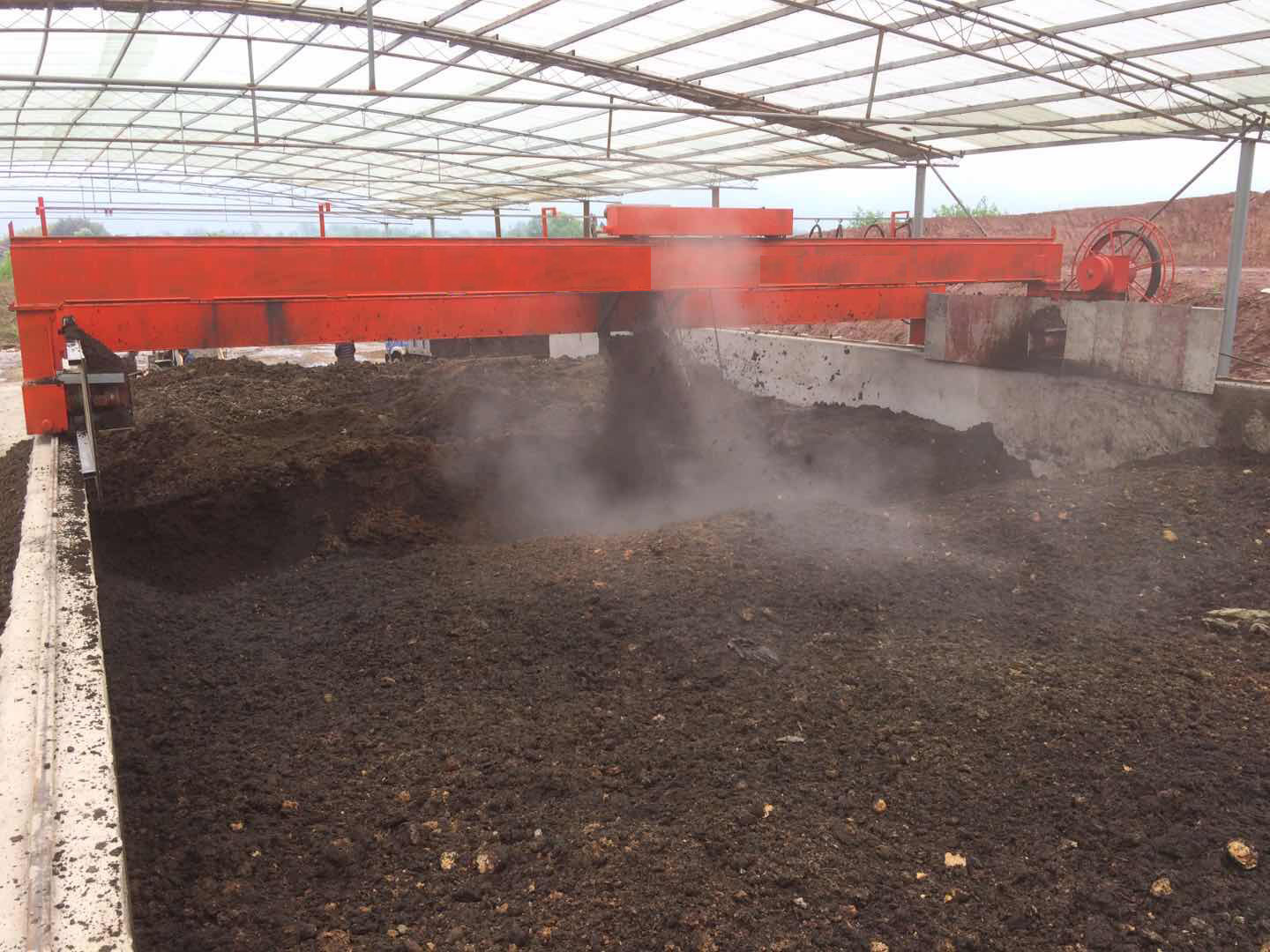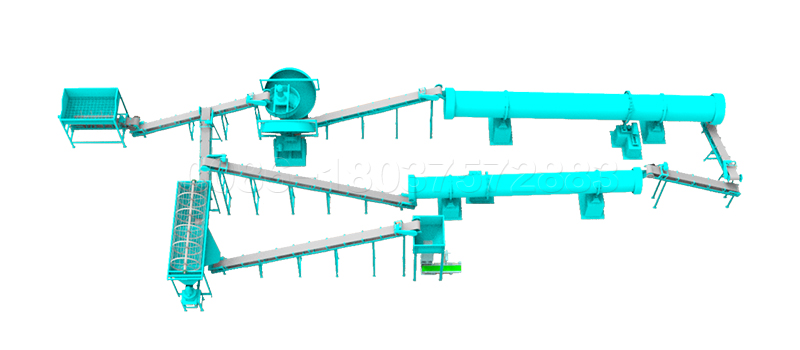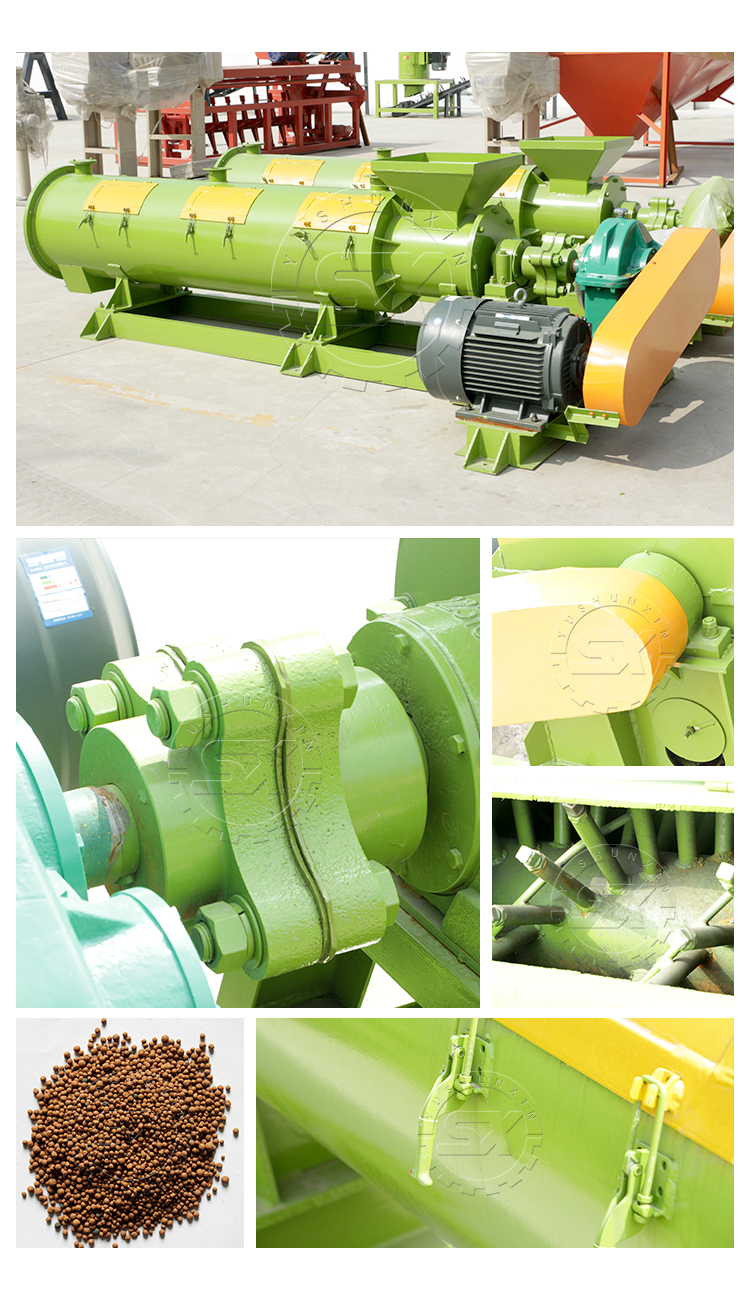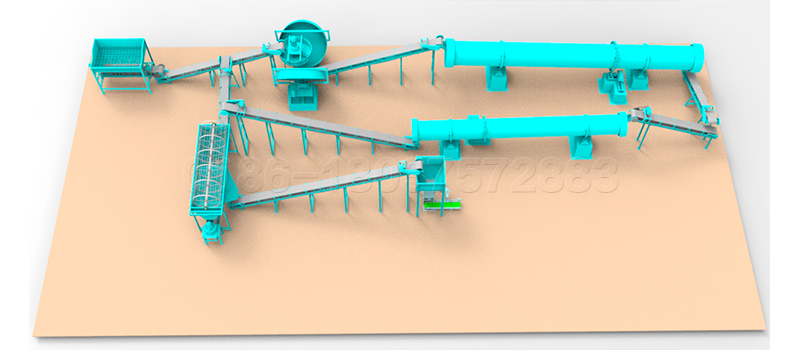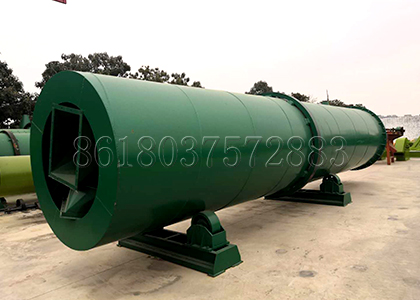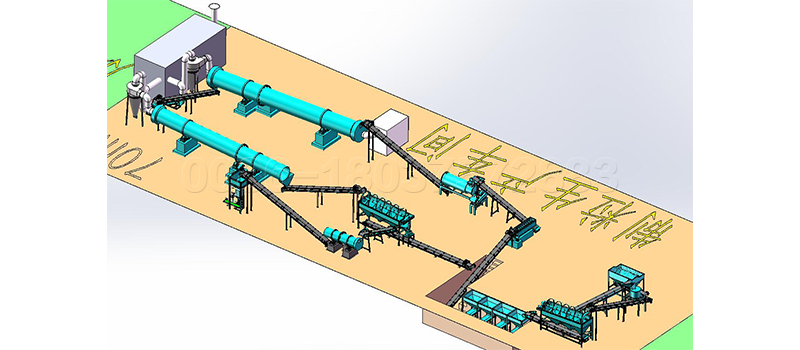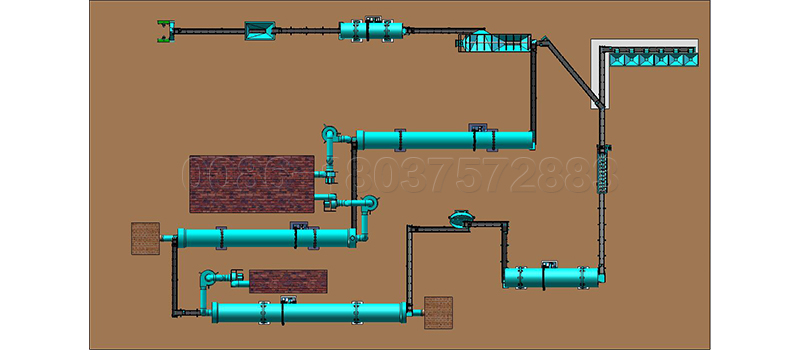The organic fertilizer flat mold granulator adopts microbial fermentation technology to produce deodorized, sterile, high fertilizer efficiency, non root burning and non seedling burning organic fertilizer from livestock and poultry feces, urban garbage and other feces.
This machine is used for grain fields, fruits, vegetables and flowers. It is applicable to the technical transformation of organic fertilizer production line in new plant or original compound fertilizer plant.
Main performance characteristics of organic fertilizer flat mold granulator
The press roll of this machine adopts inclined wheel. The speed of both ends of the template is the same as that of the inner and outer ring of the template, there is no dislocation friction between the wheel and the mold, the resistance is reduced, the kinetic energy loss is reduced, and the service life of the mold is prolonged.
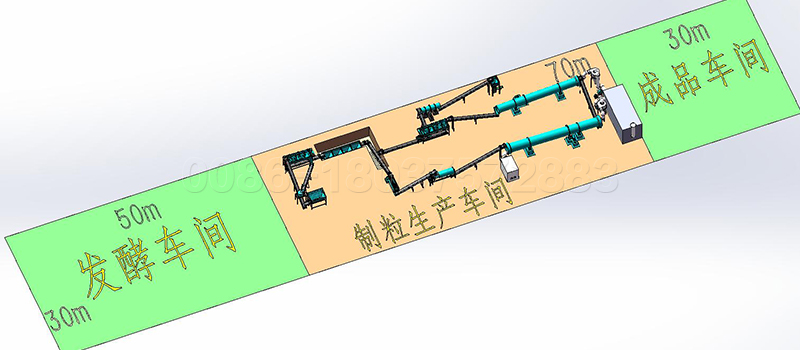
This is the main difference from similar die equipment. At the same time, the technology adopted by organic fertilizer granulator is the most advanced technology today. The press rollers of the flat molding granulator are evenly arranged and run smoothly, eliminating the easy feeding of the ordinary flat molding roller.
The organic fertilizer flat mold granulator adopts the central pressure regulating structure to adapt to different materials and ensure the pressing effect. The pressing die of sawdust and corn straw needs a lot of pressure. Among the similar granulation equipment, the drum part is the core part of the whole equipment.
The use of high-quality alloy steel improves the service life of the drum of organic fertilizer granulator.
The bio organic fertilizer flat molding granulator is equipped with a suitable pelletizer on the basis of the fertilizer granulator, so that the cylindrical particles can form balls at one time without returning particles, with high granulation rate, good strength, beautiful and applicable. It is an ideal equipment for biological fertilizer granulation.
More detailed info, welcome go to https://fertilizerplantequiment.com/in-vessel-composting-equipment/


